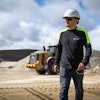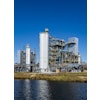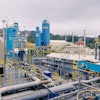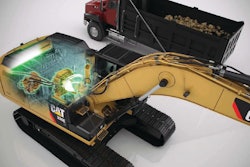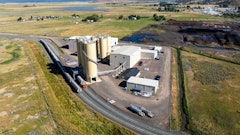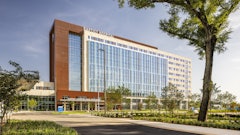As sustainability and energy efficiency initiatives take hold around the world, firms are finding business value and opportunities from green building, including the opportunity for new environmentally responsible products, according to McGraw-Hill Construction’s latest SmartMarket Report, “World Green Building Trends - Business Benefits Driving New and Retrofit Market Opportunities in Over 60 Countries”. The report, developed in partnership with United Technologies Corp. (UTC), is based on a study of global green building trends and aims to discern drivers of the green building marketplace.
According to the study, firms are shifting their business toward green building, with 51 percent of respondents planning more than 60 percent of their work to be green by 2015. This is a significant increase from the 28 percent that said the same for their work in 2013 and double the 13 percent in 2008.
This growth is not a trend localized to one country or region. From 2012 to 2015, the number of firms anticipating that more than 60 percent of their work will be green:
- More than triples in South Africa;
- More than doubles in Germany, Norway and Brazil;
- Grows between 33 and 68 percent in the United States, Singapore, the United Kingdom, the United Arab Emirates and Australia.
“This report confirms that the green building movement has shifted from ‘push’ to ‘pull’—with markets increasingly demanding no less than green buildings,” said John Mandyck, chief sustainability officer, UTC Climate, Controls & Security. “By promoting greater efficiencies for energy and water, green buildings lower building costs while conserving the earth’s precious resources. This powerful combination of built-in payback with environmental stewardship creates a new value proposition that is accelerating green building in all regions of the globe.”
Drivers Behind Accelerated Growth
The key driver to going green, according to the survey, is that now green building is a business imperative around the world. In the 2008 report, McGraw-Hill Construction found that the top driver for green building was “doing the right thing.” However in 2012, business drivers such as client and market demand are the key factors influencing the market.
“The acceleration of the green building marketplace around the world is creating markets for green building products and technologies, which in turn will lead to faster growth of green building,” said Harvey Bernstein, vice president of Industry Insights and Alliances at McGraw-Hill Construction. “And the fact that green is growing in all parts of the world indicates that there are market opportunities in both established markets as well as developing countries.”
These opportunities are mapping against expected benefits:
- 76 percent report that green building lowers operating costs
- More than one third point to higher building values (38 percent), quality assurance (38 percent), and future-proofing assets (i.e., protecting against future demands) (36 percent)
Global industry professionals have high expectations of the operating cost benefits of green building—19 percent believe their operating costs will decrease by 15 percent or more over the next year (51 percent believe there will be increases of 6 percent or more), and 39 percent believe they will see savings of 15 percent or more over the next five years (67 percent expect savings of 6 percent or more).
In 2012, 89 percent of global industry professionals report using or specifying a green building product, and even more—91 percent—expect to do so by 2017. The most significant green building product opportunities are in the categories of electrical, mechanical, and thermal and moisture protection with at least 60 percent of survey respondents stating that they had installed or specified products in these categories in 2012, with a slightly higher percentage expecting to do so by 2017.
Given its importance, measuring lower operating costs is also the most used metric to evaluate green building performance—reported by 52 percent. These benefits are particularly important given that they can offset the higher initial costs that 76 percent of the industry report as the biggest challenge to building green.
The findings published in the report are drawn from a McGraw-Hill Construction survey of firms across 62 countries around the world. Firms include architects, engineers, contractors, consultants and building owners.
The study was produced in partnership with United Technologies with support from the World Green Building Council and the U.S. Green Building Council. Other research association partners include the Chartered Institute of Buildings, International Federation of Consulting Engineers (Fédération Internationale Des Ingénieurs-Conseils), Association for Consultancy and Engineering, Conseil International du Bâtiment (International Council for Building), Architect’s Council of Europe, and the Royal Institution of Chartered Surveyors. A separate survey of global manufacturing firms was also conducted.
For more key findings from the World Green Building Trends SmartMarket Report, visit http://analyticsstore.construction.com/index.php/world-green-building-trends-smartmarket-report-2013.html.

